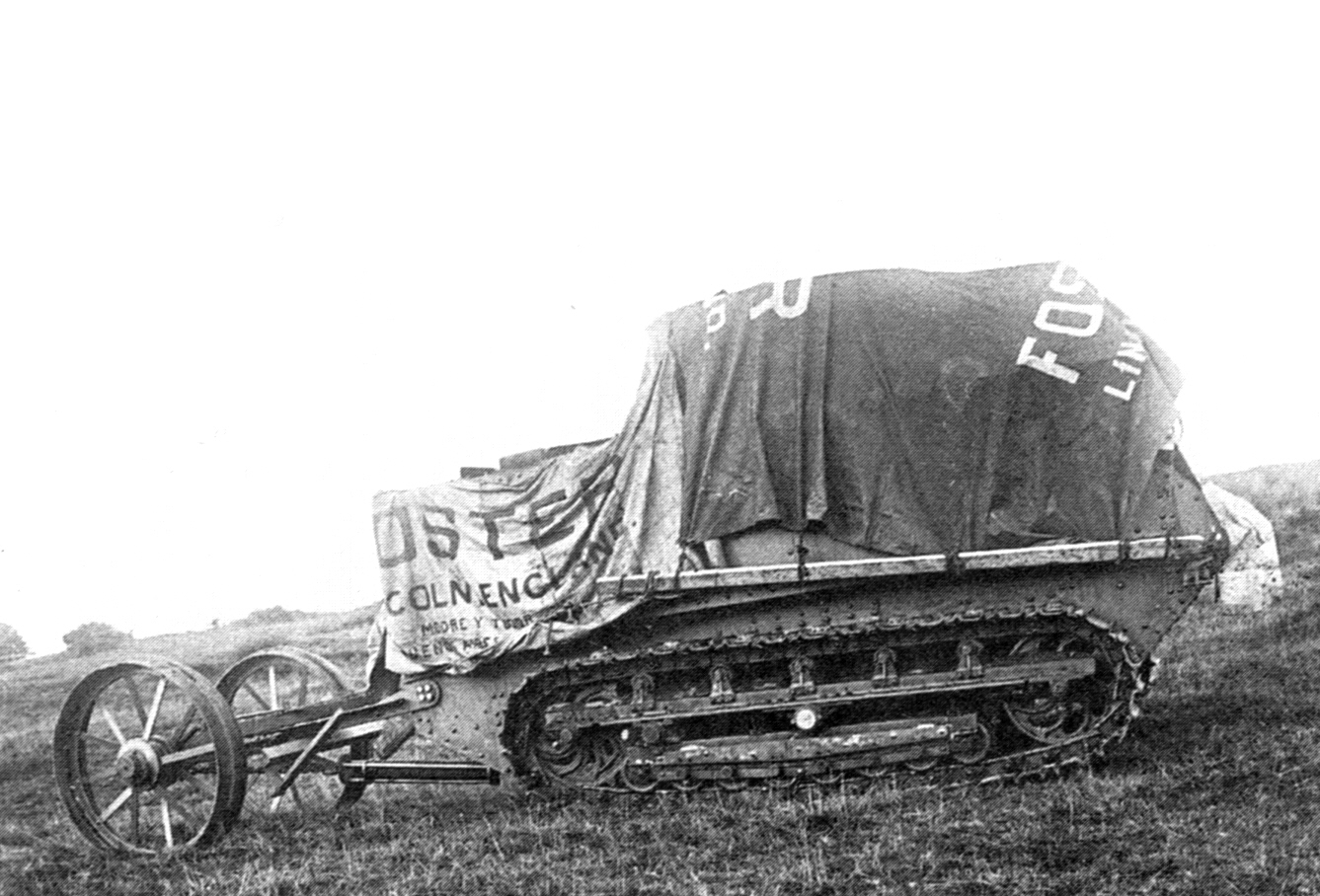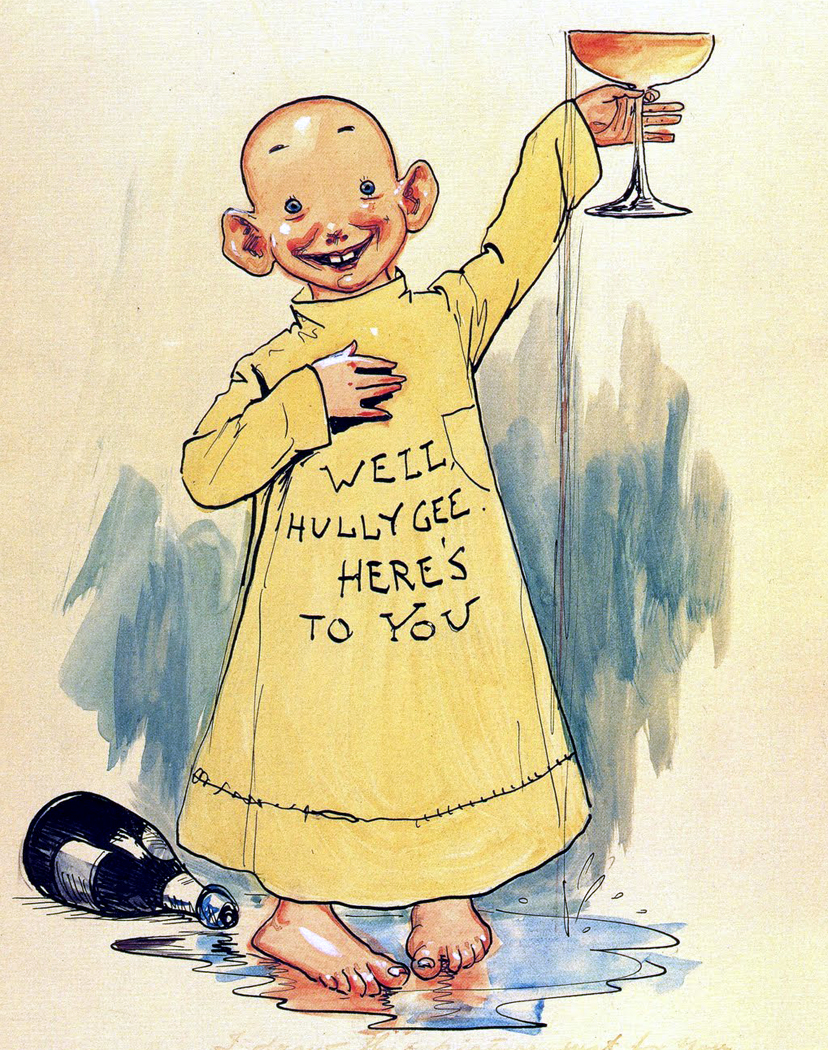|
Little Willie
Little Willie was a prototype in the development of the British Mark I tank. Constructed in the autumn of 1915 at the behest of the Landship Committee, it was the first completed tank prototype in history. ''Little Willie'' is the oldest surviving individual tank, and is preserved as one of the most famous pieces in the collection of The Tank Museum, Bovington, England. Number 1 Lincoln Machine Work on Little Willie's predecessor was begun in July 1915 by the Landship Committee to meet The United Kingdom's requirement in World War I for an armoured combat vehicle able to cross an trench. After several other projects where single and triple tracks had failed, on 22 July William Ashbee Tritton, director of the agricultural machinery company William Foster & Company of Lincoln, was given the contract to develop a "Tritton Machine" with two tracks. It had to make use of the track assemblies – lengthened tracks and suspension elements (seven road wheels instead of four) – ... [...More Info...] [...Related Items...] OR: [Wikipedia] [Google] [Baidu] |
William Foster & Co
William is a male given name of Germanic origin.Hanks, Hardcastle and Hodges, ''Oxford Dictionary of First Names'', Oxford University Press, 2nd edition, , p. 276. It became very popular in the English language after the Norman conquest of England in 1066,All Things William"Meaning & Origin of the Name"/ref> and remained so throughout the Middle Ages and into the modern era. It is sometimes abbreviated "Wm." Shortened familiar versions in English include Will, Wills, Willy, Willie, Bill, and Billy. A common Irish form is Liam. Scottish diminutives include Wull, Willie or Wullie (as in Oor Wullie or the play ''Douglas''). Female forms are Willa, Willemina, Wilma and Wilhelmina. Etymology William is related to the given name ''Wilhelm'' (cf. Proto-Germanic ᚹᛁᛚᛃᚨᚺᛖᛚᛗᚨᛉ, ''*Wiljahelmaz'' > German ''Wilhelm'' and Old Norse ᚢᛁᛚᛋᛅᚼᛅᛚᛘᛅᛋ, ''Vilhjálmr''). By regular sound changes, the native, inherited English form of the name sho ... [...More Info...] [...Related Items...] OR: [Wikipedia] [Google] [Baidu] |
Chicago
(''City in a Garden''); I Will , image_map = , map_caption = Interactive Map of Chicago , coordinates = , coordinates_footnotes = , subdivision_type = Country , subdivision_name = United States , subdivision_type1 = State , subdivision_type2 = Counties , subdivision_name1 = Illinois , subdivision_name2 = Cook and DuPage , established_title = Settled , established_date = , established_title2 = Incorporated (city) , established_date2 = , founder = Jean Baptiste Point du Sable , government_type = Mayor–council , governing_body = Chicago City Council , leader_title = Mayor , leader_name = Lori Lightfoot ( D) , leader_title1 = City Clerk , leader_name1 = Anna Valencia ( D) , unit_pref = Imperial , area_footnotes = , area_total ... [...More Info...] [...Related Items...] OR: [Wikipedia] [Google] [Baidu] |
William Haselden
William Kerridge Haselden (3December 187225December 1953) was an English cartoonist and caricaturist. He was the second of five children of Adolphe Henry Haselden and his wife Susan Elizabeth (née Kerridge). Haselden's parents were both English but met in Seville, where his father was director of the Seville Gasworks. Haselden's father died during a family holiday to England in 1874, and the remaining family stayed in England, settling in Hampstead. The young William's education at a private school was cut short due to the family's financial problems, and he left school at the age of 16 with no formal artistic training. He worked unhappily as an underwriter at Lloyd's in London for thirteen years before some of his sketches were accepted for the periodical ''The Sovereign''. When this ceased publication a few months later, he obtained some freelance work on the ''Tatler'' and '' St. James's Gazette''. After approaching the offices of Alfred Harmsworth in 1903, Haselden m ... [...More Info...] [...Related Items...] OR: [Wikipedia] [Google] [Baidu] |
William II, German Emperor
Wilhelm II (Friedrich Wilhelm Viktor Albert; 27 January 18594 June 1941) was the last German Emperor (german: Kaiser) and King of Prussia, reigning from 15 June 1888 until his abdication on 9 November 1918. Despite strengthening the German Empire's position as a great power by building a powerful navy, his tactless public statements and erratic foreign policy greatly antagonized the international community and are considered by many to be one of the underlying causes of World War I. When the German war effort collapsed after a series of crushing defeats on the Western Front in 1918, he was forced to abdicate, thereby marking the end of the German Empire and the House of Hohenzollern's 300-year reign in Prussia and 500-year reign in Brandenburg. Wilhelm II was the son of Prince Frederick William of Prussia and Victoria, German Empress Consort. His father was the son of Wilhelm I, German Emperor, and his mother was the eldest daughter of Queen Victoria of the United Kingdo ... [...More Info...] [...Related Items...] OR: [Wikipedia] [Google] [Baidu] |
Wilhelm, German Crown Prince
Wilhelm, German Crown Prince, Crown Prince of Prussia (Friedrich Wilhelm Victor August Ernst; 6 May 1882 – 20 July 1951) was the eldest child of the last ''Kaiser'', the German Emperor, Wilhelm II, and his consort Augusta Victoria of Schleswig-Holstein. As Emperor Wilhelm's heir, he was the last Crown Prince of the German Empire and the Kingdom of Prussia. Wilhelm became crown prince at the age of six in 1888, when his grandfather Frederick III died and his father became emperor. He was crown prince for 30 years until the fall of the empire on 9 November 1918. During World War I, he commanded the 5th Army from 1914 to 1916 and was commander of the Army Group German Crown Prince for the remainder of the war. After his return to Germany in 1923, he fought the Weimar Republic and campaigned for the reintroduction of the monarchy in Germany. After his plans to become president had been blocked by his father, Wilhelm supported Adolf Hitler's rise to power, but when Wilhelm rea ... [...More Info...] [...Related Items...] OR: [Wikipedia] [Google] [Baidu] |
Yellow Press
Yellow journalism and yellow press are American terms for journalism and associated newspapers that present little or no legitimate, well-researched news while instead using eye-catching headlines for increased sales. Techniques may include exaggerations of news events, scandal-mongering, or sensationalism. By extension, the term ''yellow journalism'' is used today as a pejorative to decry any journalism that treats news in an unprofessional or unethical fashion. In English, the term is chiefly used in the US. In the UK, a roughly equivalent term is '' tabloid journalism'', meaning journalism characteristic of tabloid newspapers, even if found elsewhere. Other languages, e.g. Russian ( Жёлтая пресса), sometimes have terms derived from the American term. A common source of such writing is called checkbook journalism, which is the controversial practice of news reporters paying sources for their information without verifying its truth or accuracy. In some countrie ... [...More Info...] [...Related Items...] OR: [Wikipedia] [Google] [Baidu] |
Sponson
Sponsons are projections extending from the sides of land vehicles, aircraft or watercraft to provide protection, stability, storage locations, mounting points for weapons or other devices, or equipment housing. Watercraft On watercraft, a sponson is a projection that extends outward (usually from the hull, but sometimes other parts of the vessel) to improve stability while floating, or to act as a securing point for other equipment. Vessels with unstable body shapes or unevenly distributed weight are likely to feature sponsons to help prevent capsizing or other instabilities. On many vessels, these projections from the main body of the vessel can be attached and removed quickly and fairly easily. Canoes and kayaks sometimes feature sponson attachments as well, for stability in rough waters. These differ from outriggers, which extend a significant distance away from the body of the craft, and are employed on craft designed for open waters. A sponson's terminus is close to the cr ... [...More Info...] [...Related Items...] OR: [Wikipedia] [Google] [Baidu] |
Little Willie Early Design
Little is a synonym for small size and may refer to: Arts and entertainment * ''Little'' (album), 1990 debut album of Vic Chesnutt * ''Little'' (film), 2019 American comedy film *The Littles, a series of children's novels by American author John Peterson ** ''The Littles'' (TV series), an American animated series based on the novels Places *Little, Kentucky, United States *Little, West Virginia, United States Other uses * Clan Little, a Scottish clan *Little (surname), an English surname *Little (automobile), an American automobile manufactured from 1912 to 1915 *Little, Brown and Company, an American publishing company * USS ''Little'', multiple United States Navy ships See also * * * Little Mountain (other) *Little River (other) Little River may refer to several places: Australia Streams New South Wales *Little River (Dubbo), source in the Dubbo region, a tributary of the Macquarie River * Little River (Oberon), source in the Oberon Shire, a tributary of C ... [...More Info...] [...Related Items...] OR: [Wikipedia] [Google] [Baidu] |
Artillery Tractor
An artillery tractor, also referred to as a gun tractor, is a specialized heavy-duty form of tractor unit used to tow artillery pieces of varying weights and calibres. It may be wheeled, tracked, or half-tracked. Traction There are two main types of artillery tractors, depending on the type of traction: wheeled and tracked. * Wheeled tractors are usually variations of lorries adapted for military service. * Tracked tractors run on continuous track; in some cases are built on a modified tank chassis with the superstructure replaced with a compartment for the gun crew or ammunition. In addition, half-track tractors were used in the interwar period and in World War II, especially by the Wehrmacht. This type of tractor was mostly discontinued postwar. History World War I The first artillery tractors were designed prior to the outbreak of World War I, often based on agricultural machines such as the Holt tractor. Such vehicles allowed the tactical use of heavier guns ... [...More Info...] [...Related Items...] OR: [Wikipedia] [Google] [Baidu] |
Mark VIII (tank)
The Mark VIII tank also known as the Liberty or The International was a British-American tank design of the First World War intended to overcome the limitations of the earlier British designs and be a collaborative effort to equip France, the UK and the US with a single heavy tank design. Production at a site in France was expected to take advantage of US industrial capacity to produce the automotive elements, with the UK producing the armoured hulls and armament. The planned production levels would have equipped the Allied armies with a very large tank force that would have broken through the German defensive positions in the planned offensive for 1919. In practice, manufacture was slow and only a few vehicles were produced before the end of the war in November 1918. After the war, 100 vehicles assembled in the US were used by the US Army until more advanced designs replaced them in 1932. A few tanks that had not been scrapped by the start of World War II were offered to Cana ... [...More Info...] [...Related Items...] OR: [Wikipedia] [Google] [Baidu] |






.jpg)
